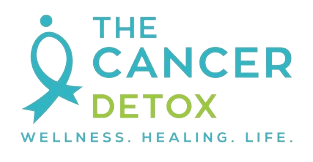Cancer Basics: What is Cancer?
Welcome to the Bedside Manners series on Cancer Basics. Our mission is to empower cancer patients and survivors through education.
What is cancer?
In Latin, cancer means crab. It makes sense if you look closely at cancer cells under a microscope with what looks like “arms” and “claws”. Cancer is the malignant (bad) growth of the cell. These cells were once normal healthy cells that have gone rogue. These normal cells start to grow uncontrollably, non-stop, and unchecked by the body’s immune system. Cancer cells are like a child that gets away with a lot of bad behavior. Soon enough, these bad cells surround and affect the function of healthy tissue.
Primary cancer is the original site where the cancer tumor originated. As these cancerous cells continue to invade healthy tissue they can enter the bloodstream and travel to other parts of the body. This is where secondary cancer, or metastases, can develop.
Why does cancer develop?
Healthy cells divide so that they can replenish the supply of cells that have died and no longer function properly. Under normal, healthy conditions, the cell division is controlled by our body’s DNA, so that one cells divides in two and that’s it. However, when the DNA that controls cell division becomes damaged a healthy cell doesn’t just divide from one to two then stop, it keeps dividing. Going from two to four, four to eight, and so on. With nothing to stop the cells from dividing they eventually turn into a mass or tumor.
There are several factors that can damage DNA and lead to cancer:
1) Poor nutrition
2) Lack of exercise
3) Environmental toxins
4) Viruses
As well, aging can lead to damaged DNA because the longer we live the more chances there are for errors to occur in the part of the DNA that codes for cell division. Ultimately, the longer you live the higher the likelihood that you could develop cancer.
Why is cancer so dangerous?
Cancer is dangerous because it interferes with the normal functioning of our body. When it invades tissues and organs it can interfere with how those organs work. For instance, a tumor in the lung will block air passageways causing shortness of breath and even make it easier for bacteria to cause an infection.
Another reason why cancer is dangerous is that cancerous cells can break free of the primary site and move to a secondary site. This is metastases. Cancerous cells move through the blood and lymph systems. For instance, breast cancer cells can metastasize to the ribs and lungs. Prostate cancer cells can metastasize to the bones as well.
Need More Cancer Education?
Schedule a complimentary call with a Cancer Scientist and you’ll get 3 science-based cancer tips to start changing your health in 12 weeks.


